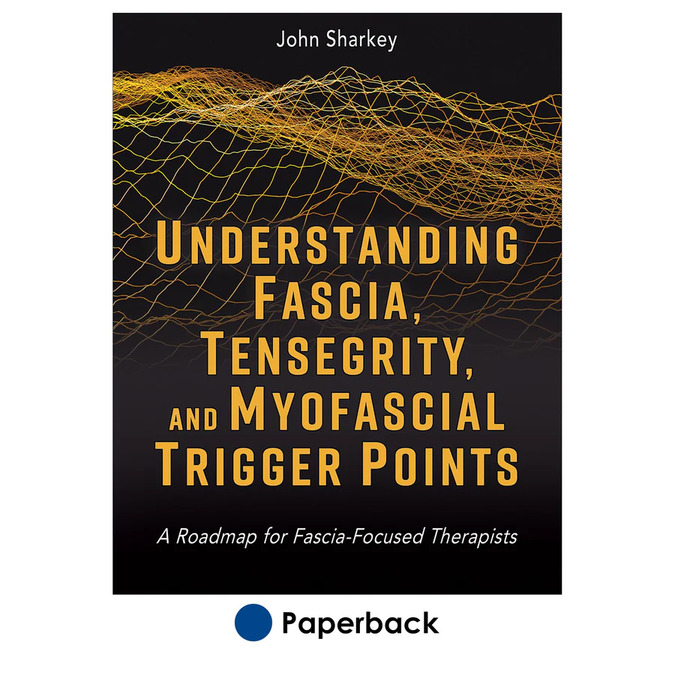Understanding Fascia, Tensegrity, and Myofascial Trigger Points elucidates the fundamental principles and concepts underpinning fascia-focused therapies. Fascia science expert John Sharkey offers analogies, anecdotes, comparisons, and language that simplify complex topics for fascia-focused therapists and movement practitioners. The text is complemented by rich photography, detailed anatomy drawings, and an analysis of referred pain patterns.
Part I of the text lays down a foundation of knowledge, helping the reader understand the relevant anatomy and how to navigate everything that follows. Part II is practical and provides the keys to understanding why fascia affects therapeutic practice—specifically, through myofascial trigger points and site-specific fascia tuning pegs. This section offers a variety of applied techniques and treatment protocols. Finally, part III supplies a clearly illustrated quick reference to skeletal muscles and pain referral patterns, divided by region: face, head, and neck; trunk; shoulder and upper arm; forearm and hand; hip and thigh; and leg and foot.
Throughout the text, the author offers his insights in sidebars and comment sections. Tables break down important knowledge into easily digestible information. At the end of the text, there are a list of abbreviations, references, and an index to help the reader navigate the pages.
Part I of the text lays down a foundation of knowledge, helping the reader understand the relevant anatomy and how to navigate everything that follows. Part II is practical and provides the keys to understanding why fascia affects therapeutic practice—specifically, through myofascial trigger points and site-specific fascia tuning pegs. This section offers a variety of applied techniques and treatment protocols. Finally, part III supplies a clearly illustrated quick reference to skeletal muscles and pain referral patterns, divided by region: face, head, and neck; trunk; shoulder and upper arm; forearm and hand; hip and thigh; and leg and foot.
Throughout the text, the author offers his insights in sidebars and comment sections. Tables break down important knowledge into easily digestible information. At the end of the text, there are a list of abbreviations, references, and an index to help the reader navigate the pages.





